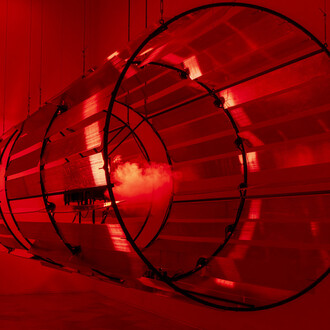Pepa Caballero (Granada, 1943-Málaga, 2012) was the only woman in the founding group of the Colectivo Palmo, made up of artists living in Málaga. Palmo was active from 1979 until its dissolution in December 1987. Only a few members of in the collective, such as Pepa Caballero, delved into the study of abstract composition, as heterogeneity was one of the main characteristics of the group, which was more interested in the socio-cultural involvement of its activities than in seeking a common language. In any case, although Palmo played a key role in driving the artistic and cultural renewal of the Costa del Sol’s capital, it has been treated as a peripheral group, in the same way as the city of Malaga itself until recently. In the case of Pepa Caballero, like other Palmo abstractionists, with the exception of Manuel Barbadillo (1929-2003), the fact that her production did not follow the paths marked out by the new figuration and insisted on abstraction at such a late date, we believe, was a determining factor in the fact that she was and still is practically unknown outside Malaga.
After relocating to Málaga, Pepa Caballero’s artistic activity expanded significantly, characterized by her unique approach to abstract informalism. Her style was distinguished by deliberately limited palette of three or four colors, which allowed for variations in saturation but not in hue.
Caballero’s career spanned a period of several years while she lived in Zamora, from the late 1970s to the late 1980s, during which she worked with an unusual palette of colours. In these pieces, grouped under the title Después de la poda (After Pruning), joy and a passion for life seem to encourage research that is not free of large doses of rationality and formal conceptualism. At that time she began to investigate repetition, variations within repetition, the brushstroke-module and the grid.
When she returned to Málaga at the end of the 1980s, Caballero embarked on new explorations, drawing inspiration from successive trips to Greece, Rome, and the United States. These experiences left a deep imprint of Mediterranean culture and lifestyles on his work, along with the influence of contemporary abstract artists.
During the first decade of the 21st century, a very prolific period, we find paintings of very diverse compositions of colour fields and lines, which take up some of the research carried out in previous series. Pepa Caballero explores constructive abstraction and, although she works mainly with chromatic areas rather than shapes, these are still present, although with much less prominence. On the other hand, the ten dency to verticality of lines, very marked in the previous series, becomes less and she introduces horizontal or diagonal lines in the works of her last period; moreover, she completely abandons the grid. The tendency towards the configuration of polyptychs became very pronounced at this phase. According to the artist herself, the polyptychs could be presented in a wide variety of combinations, for which she allowed complete freedom. During this period, she also worked intensely on the abstract revision of major works, particularly Renaissance and Baroque ones.
















